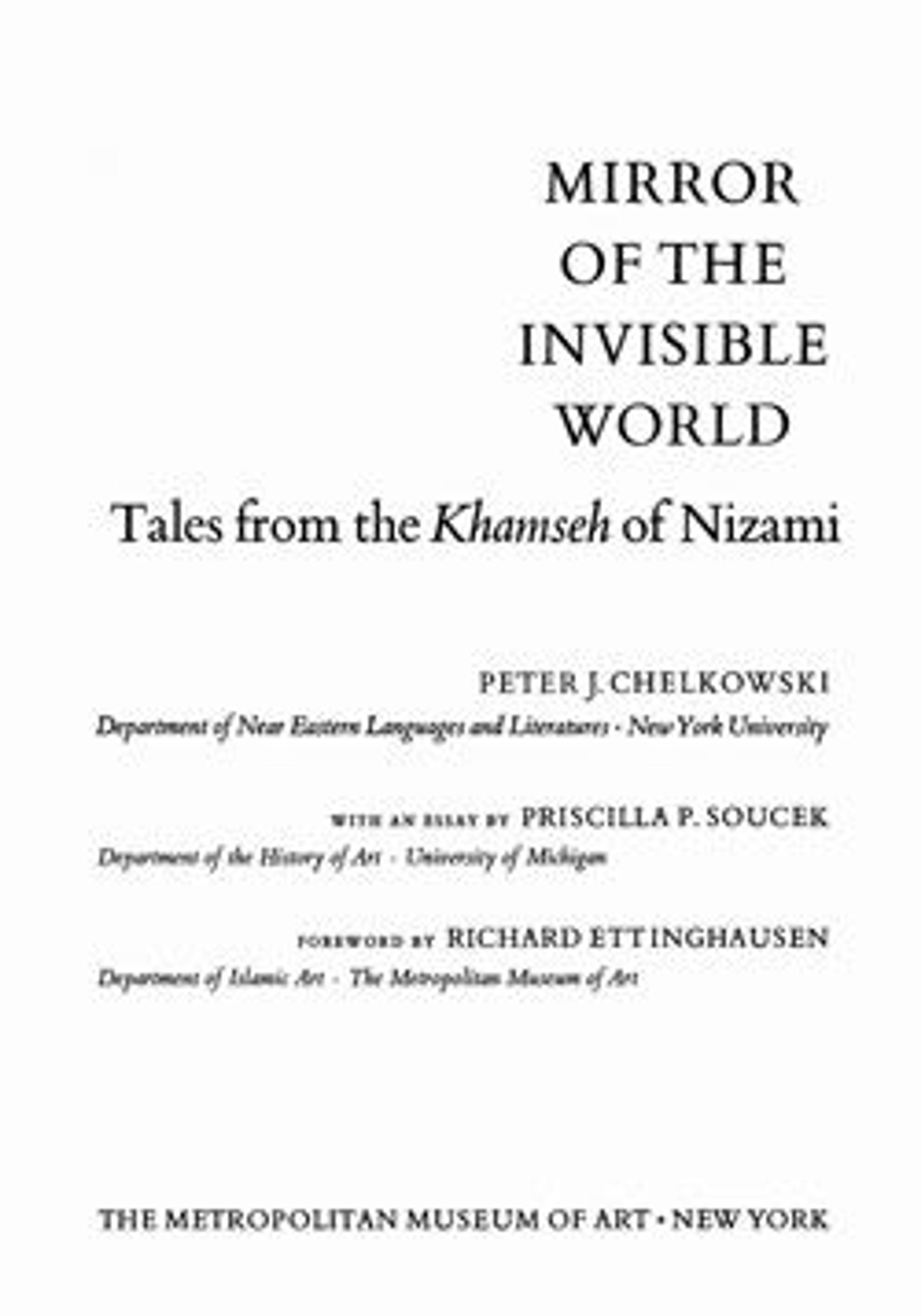"Khusrau Catches Sight of Shirin Bathing", Folio 50 from a Khamsa (Quintet) of Nizami of Ganja
One of the five stories related in Nizami's Khamsa (Five Tales) concerns the love affair between the Iranian king Khusrau and the Armenian princess Shirin. This beautifully-detailed painting captures the moment when Khusrau first catches sight of Shirin, bathing in a stream. While the pond has now tarnished to near black, it was originally painting in shining silver, complementing the golden sky above.
Artwork Details
- Title: "Khusrau Catches Sight of Shirin Bathing", Folio 50 from a Khamsa (Quintet) of Nizami of Ganja
- Author: Nizami (present-day Azerbaijan, Ganja 1141–1209 Ganja)
- Calligrapher: Sultan Muhammad Nur (Iranian, ca. 1472–ca. 1536)
- Calligrapher: Mahmud Muzahib (Iranian, ca. 1500–1560)
- Artist: Painting by Shaikh Zada (Iranian, active 1510–1550)
- Date: dated 931 AH/1524–25 CE
- Geography: Made in present-day Afghanistan, Herat
- Medium: Ink, opaque watercolor, and gold on paper
- Dimensions: Page: H. 12 5/8 in. (32.1 cm)
W. 8 3/4 in. (22.2 cm)
Mat: H. 19 1/4 in. (48.9 cm)
W. 14 1/4 in. (36.2 cm) - Classification: Codices
- Credit Line: Gift of Alexander Smith Cochran, 1913
- Object Number: 13.228.7.3
- Curatorial Department: Islamic Art
More Artwork
Research Resources
The Met provides unparalleled resources for research and welcomes an international community of students and scholars. The Met's Open Access API is where creators and researchers can connect to the The Met collection. Open Access data and public domain images are available for unrestricted commercial and noncommercial use without permission or fee.
To request images under copyright and other restrictions, please use this Image Request form.
Feedback
We continue to research and examine historical and cultural context for objects in The Met collection. If you have comments or questions about this object record, please contact us using the form below. The Museum looks forward to receiving your comments.
